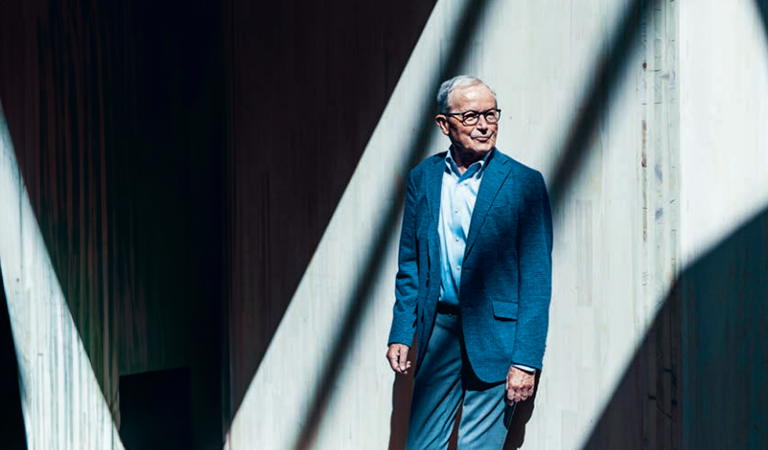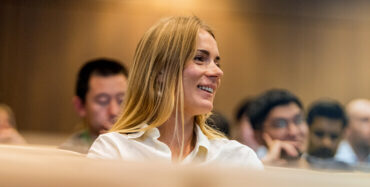
Some people are born great, some achieve greatness, others have greatness thrust upon them, according to the celebrated Shakespeare quote from Twelfth Night.
A very small cadre of individuals appear to fall into all three categories. Kjeld Kirk Kristiansen is grandson of the founder of the LEGO company, Ole Kirk Kristiansen; was a member of the inaugural MBA cohort at IMEDE in 1972, became chief executive of the legendary toy company for a quarter of a century, during which time he introduced minifigures and LEGO robots, and oversaw the spread of the toy to new markets around the world.
Then, when growth faltered in the early 2000s amid the transition to the digital age, he moved to a board role and made an inspired hire as CEO, Jørgen Vig Knudstorp, under whose leadership the iconic toy firm returned to global growth, with Kjeld as chair of KIRKBI, the family’s holding company.
His passion has never dimmed for the values of LEGO, which are centered around seeing creative play as the basis for a healthy childhood and a productive life.
“Children are our role models and we should always think of how can we give them the best possible help in their development from the early stages of life and actually help them be lifelong learners.”
The ability to think in three dimensions, to mentally design, and then build, something not created before, while engaging different senses, assists the cognitive development of a child. The most inventive individuals continue and develop such capabilities throughout their adult years.
There is an element of play in the process of invention. Many companies have sought to incorporate an element of fun and experimentation into the workplace in order to sustain creativity. For LEGO, this has been a founding principle.
Reflecting on his year at Lausanne, Kjeld pays tribute to the school’s contribution to his own mindset of lifelong learning. “It really stands out for me as the most important year in my life. It was such a great learning experience.”
As a quite young attendee, at the age of just 25, and rather shy in manner, he particularly valued the development of self-awareness and personal confidence. He was challenged in groupwork, coached in leadership capability, and emerged ready to take on a senior managerial role.
The campus was smaller, the cohort numbered just 28, with only one woman, so it was superficially a quite different
world. But the real-world relevance, brilliance of the teaching and intense groupwork were established from the very first year of the qualification.
In the decades since, LEGO has arranged for many executives to attend the executive programs at IMD, and the company hires from the MBA course.
Professor Xavier Gilbert was a significant influence, and Kjeld invited him to give lectures to managers at LEGO. In addition, Kjeld served eight years on the IMD supervisory board.
Back in 1972, his cohort included another Dane, Torsten Rasmussen, with whom he formed a close friendship, and who would go on to be a successful manager at the LEGO company. During the MBA year the two would engage in discussions about the merits of Kjeld returning directly to
the family business or gaining experience elsewhere “to get more unbiased feedback regarding my own qualifications”.
The decision was made easier by the opening of a facility in Switzerland by LEGO, in research and development and plastic molding, for which Kjeld was an ideal selection as manager. He led the operation for five years before being appointed CEO.
In his long tenure as chief executive, from 1979 to 2004, he sought to maintain a balance of continuity and innovation, as the firm expanded
internationally. During this period, the rise of video games appeared to threaten the popularity of traditional toys, but Kjeld was always fascinated by technology. Seeing a demonstration by Seymour Papert from MIT Media Lab of a toy robot on a television program in 1984, prompted thoughts around combining the traditional and the new. He sought a meeting with the inventor and the sharing of ideas led ultimately
to the launch in 1998 of Mindstorms, a programmable robot constructed with LEGO bricks.
During the COVID-19 pandemic and associated lockdowns during 2020 to 2022, demand for LEGO sets grew again, as families where the parents were
working from home had more time to play together. Since then, there has been a strong growth in sales to the adult segment.
Does Kjeld recall his grandfather? He was only 10 years old when Ole passed, but he has a memory of sitting in his office, probably after the school day had ended, cutting out stamps. A child playing in the office, different generations together, is a heart-warming image. It is also an instructive one.


